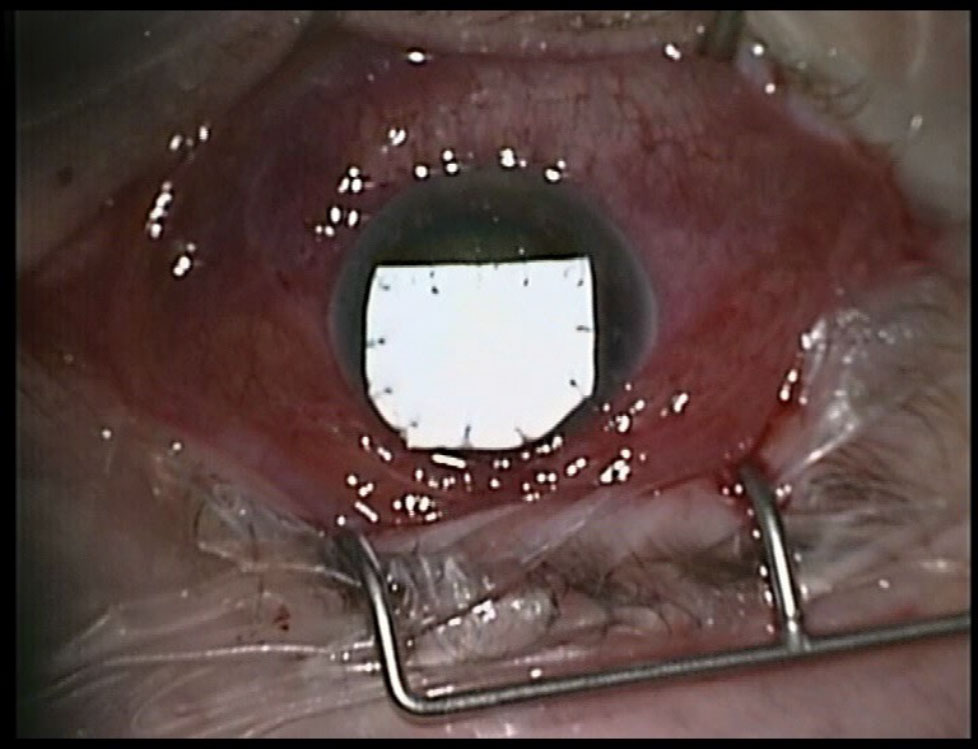Use of the PRECLUDE® pericardial e-PTFE membrane in ophthalmology
Raba PRECLUDE® perikardialne e-PTFE membrane v oftalmologiji
Abstract
This article provides an overview of the diverse applications of the PRECLUDE® pericardial e-PTFE membrane in ophthalmology.
The e-PTFE membrane was found to be safe and effective as an alternative surgical procedure for perforating corneal ulcer closures. It could be a method of choice for eye preservation or during delayed corneal transplantation, especially in immunocompromised patients. After membrane removal, penetrating keratoplasty can be performed as a definitive treatment with better prognosis as “à-chaud” keratoplasty in all eyes, as a prognosis of visual acuity improvement is expected.
E-PTFE membrane implantation for use after uneventfully performed trabeculectomy with still-uncontrolled postoperative intraocular pressure (IOP) in severe refractory glaucoma represents an additional approach for treating uncontrolled secondary glaucoma. This modified trabeculectomy can be used as surgical treatment and for refractory traumatic glaucoma cases. The e-PTFE membrane can be used in cases where antimetabolite-related risk must be avoided. Our new surgical treatment after trabeculectomy is a simple and safe procedure and can be used as a filtration-modulating device in all refractory glaucomas.
Downloads

Copyright (c) 2024 Aneja Gorišek, Dušica Pahor (Author)

This work is licensed under a Creative Commons Attribution 4.0 International License.